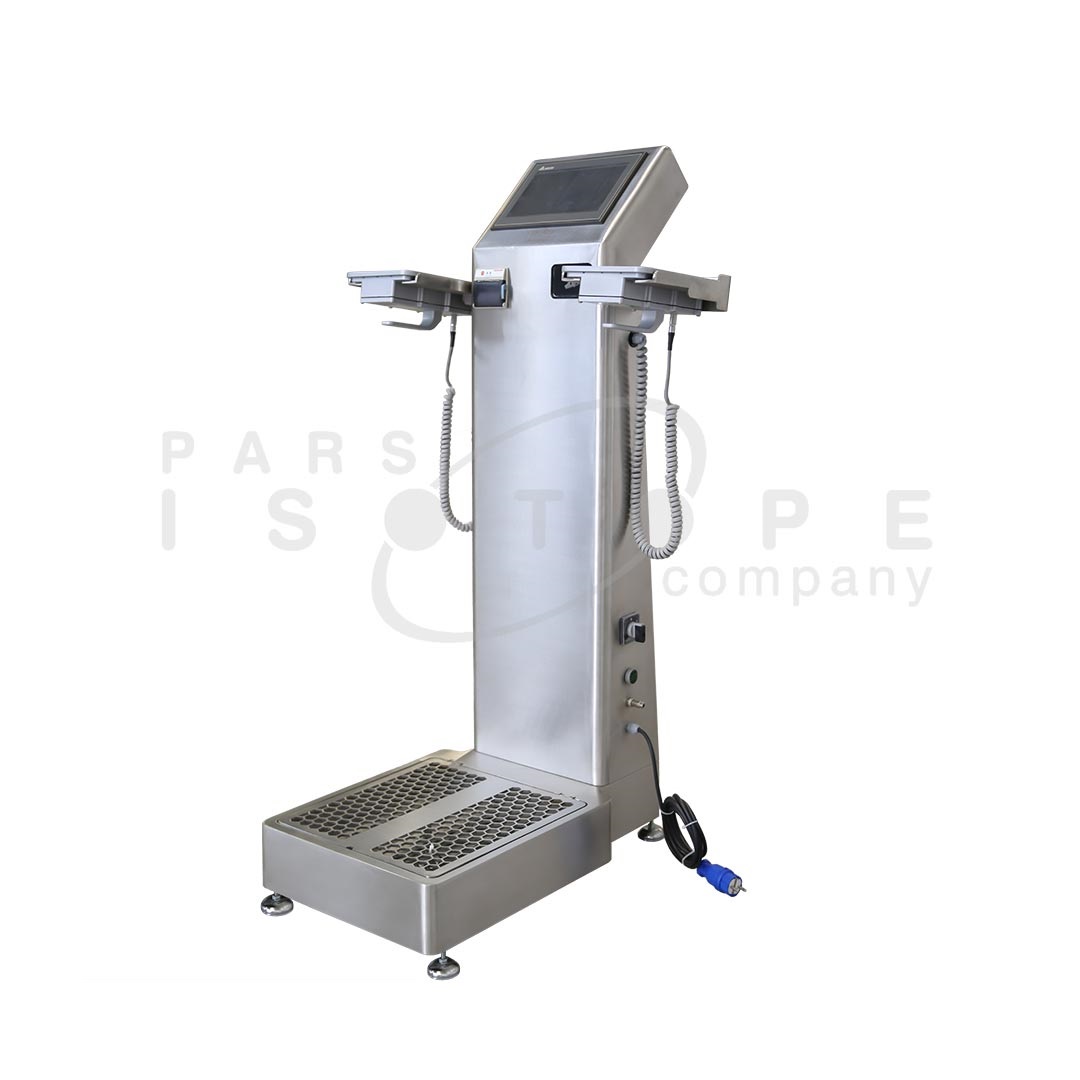Follow Us:
Hand and Foot Contamination Monitor (HFCM)
Finding probable contamination with radioactive materials is very important to those who work with such materials. Therefore, every nuclear center or laboratory that deals with radioactive materials must be equipped with a device to identify radioactive materials. This device plays a significant role in identifying surfaces contaminated to radioactive materials.
The type of detectors used in the HFCM device determines the application of the device, 4 of the detectors used in the device manufactured by Pars Isotope Company are of the type of plastic scintillation counter which are suitable to detect Beta and Gamma-ray contaminations, and the zinc sulfide (ZnS) coating is designed to detect Alpha radiation contamination.
The total number of detectors used in this device is 4: 2 detectors for detecting the contamination of the right and left hand, which are movable (Frisker Detector) and are made to detect possible contamination in other parts of the body, including the user’s clothes. (Front and back of the hand) and 2 detectors to identify the contamination of the soles of the feet.
Due to its high sensitivity to radioactive substances with alpha, beta and gamma rays, this device has wide applications in the following places:
- Research reactors
- Nuclear power plants
- Uranium and fuel processing centers
- Uranium mines
- Uranium enrichment centers
- Radioisotope production facility
- Environmental monitoring laboratories
- Nuclear research centers
It is easy to install and operate this device. The screen of the device is touch screen and has visual alarms and Farsi audio alarms, and it has the possibility of assigning the alarms required by the user, and it enables the printing of infected parts of the body. Other characteristics of this device include the background radiation removal algorithm for each detector, high sensitivity to detect surface contamination with low activity, the ability to separate low and high contamination from each other, detecting defective detectors, drawing the plateau for each detector separately, testing each detector using specific device and settings for each user using its definition in the RFID identification card.

